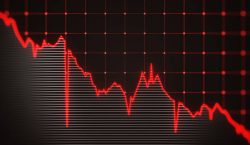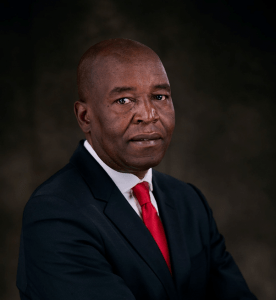

AUTHORITIES must fix Zesa’s antiquated equipment urgently and also lift the country’s power generation capacity to meet rising energy demands, business leaders say.
Speaking to The Financial Gazette this week, amid the country’s resurgent brutal power cuts, captains of industry and commerce warned that relentless load-shedding would destabilise the relative economic stability that Zimbabwe had been experiencing over the past few months.
This comes as the government has said that it is prioritising the rehabilitation of power plants and also moving to curb the vandalism of Zesa equipment to keep the lights on in the country.
The president of the Confederation of Zimbabwe Industries (CZI), Kurai Matsheza, said the current power cuts were costing business and the economy “millions of dollars in both lost production and additional costs”.

Kurai Matsheza, CZI President
“The current load-shedding is not good for manufacturing and indeed all sectors of the economy.
“Some have once again turned to using generators, which is very expensive. Some have no other alternatives and their operations are being negatively affected, unfortunately.
“This is also coming at the time of the year when business is building to heightened activity in the last quarter of the year,” Matsheza told The Financial Gazette — the country’s number one business publication.
“If these power outages are not addressed immediately, the last quarter’s activity may be lower than was originally planned at the beginning of the year.
“The system breakdowns must be attended to speedily. Clear short, medium and long term plans must be developed and followed through to address the perennial power problems in the economy,” he added.
The chief executive of the Zimbabwe National Chamber of Commerce (ZNCC), Christopher Mugaga, said the country needed to put in place long term solutions to ensure that there was optimum power for its economic needs.
“We need to put so much new investment even into hydro power because the fragility of Kariba Dam in terms of energy supply is something else.
“At some point, we need to realise that when the rain season is not good for us we feel the effects of low water flow levels in Kariba. We are feeling the impact of this as business.
“We are losing an average of about US$70 million to US$80 million every month in lost production due to the power challenges,” Mugaga said.
“Then obviously, when you look at a permanent solution that can be adopted, we need to invest much more in power generation — in particular, to invest in thermal energy.
“Yes, hydro is cheap, but sometimes it is also a function of an investment that was made years ago, and you cannot try to do so overnight with Kariba hydro power expansion.

Christopher Mugaga, the ZNCC chief executive officer.
“In terms of Hwange, I am sure we can do a lot. And, for big energy users like your Manhize steel plants that are now involved in mining, we need to promote an arrangement where they generate their own power,” Mugaga added.
The chief executive of the Small and Medium Enterprises Association of Zimbabwe (SMEAZ), Farai Mutambanengwe, also called for an expansion of the country’s power gneration capacity.
“Currently, we are heavily dependent on Kariba Hydro Power Station. It’s not a sustainable station at the moment because of the low water inflows.
“So, there has to be alternatives. We probably need more coal-fired or thermal power stations because we have a lot of coal and those are more consistent and stable in terms of providing base power,” he said.
Mutambanengwe added that the country had the potential to grow its energy sector if authorities implemented attractive policies.
“What needs to happen is that … the independent power producer industry needs to be less heavily regulated so that more players can come in and set up their own power stations, feed this into the grid and perhaps even export.
“So, we need increased supply ideally from other investors. But, even the government itself can look into that, although that may not be a good solution because already we have incurred a lot of debt in setting up Hwange’s units 7 and 8,” he also said.
On his part, economist Eddie Cross said while the country had made significant progress in generating more power through the completion of new generators at Hwange, Zesa was still lagging behind in generating enough power for the country.
“Everyone must understand that Zesa does not have the installed capacity to meet current demand, let alone the new demand that is being created by investment and growth in our economy.

Eddie Cross Cross is a former member of Parliament and a member of the RBZ’s Monetary Policy Committee.
“Right now, we have had to reduce offtake from Kariba because of a shortage of water. This will continue until water levels recover.
“With the coal-fired power stations only able to generate about 900 megawatts, this leaves us with a very serious power deficit,” Cross said.
“Solar is helping, but we need more base load and this can only come from our neighbours.
“Current demand is well over 2 000 megawatts. If you study the Intensive Energy User Group website data, you will see what the private sector is proposing, and we are working on these projects. This is the only way forward,” he added.
Another economist, Prosper Chitambara, also said it was crucial to fix the current power challenges before they caused big damage to the economy.
“The use of generators and the price of diesel, which has been increasing, obviously affect pricing and the cost of production. This generates inflationary pressures.
“We are hoping that soon the Hwange 6 unit that is under maintenance will be back on board, as that will help the situation.
“But to permanently address the situation requires investments in hydro, solar and other green energy with so much potential. Hydro is, however, affected by the droughts, and so I think solar will be a set bet.
“We also need to incentivise investments by the private sector in energy generation,” Chitambara said.
Economic analyst, Victor Bhoroma, said efforts towards a permanent solution to the power cuts included engaging multilateral and bilateral partners to secure funding for the recently suspended Batoka Gorge project.
He added that re-powering Munyati, Harare and Bulawayo power stations using domestic resources to improve thermal power generation was also critical.
“The power cuts make it difficult for producers to maintain capacity, maintain shifts and plan. Critically, manufacturers struggle to meet sales orders and spread overhead on volumes.
“Lastly, the use of generators increases the cost of production by paying for alternative energy like diesel generators and production stoppages,” he said.

All this comes after authorities said this week that they were stepping up the fight against vandalism of Zesa infrastructure, as well as accelerating the rehabilitation of ageing power plants.
Speaking to The Financial Gazette’s sister paper, the Daily News on Monday, the new minister of Energy, Edgar Moyo, pinpointed vandalism as one of the biggest challenges that Zesa was grappling with in its quest to provide reliable energy.
“Our focus basically is to accelerate electricity generation through different measures, including thermal, hydro and independent power producers.
“There is also a need to protect infrastructure from vandalism. We both know that vandalism is one of the major challenges that Zesa has been facing over the past few years,” Moyo said.
He added that he would engage other relevant ministries to find ways of protecting property from vandalism, as this was costing the under pressure Zesa a lot of money.
“The issue of vandalism requires collective action. So, we will engage some ministries to find ways of protecting the property from vandalism because Zesa has been losing a lot of money.
“My other focus area is the rehabilitation of infrastructure to make sure that all the power stations in the country are generating power to close the power deficit.
“So, these will be my key focus areas in the energy sector as we are aiming to adequately supply electricity in each and every part of the country,” Moyo told the Daily News.
He also said technicians were working flat out to restore Hwange’s unit 6, which recently encountered technical faults — resulting in the current power outages in the country. By Almot Maqolo and Mishma Chakanyuka